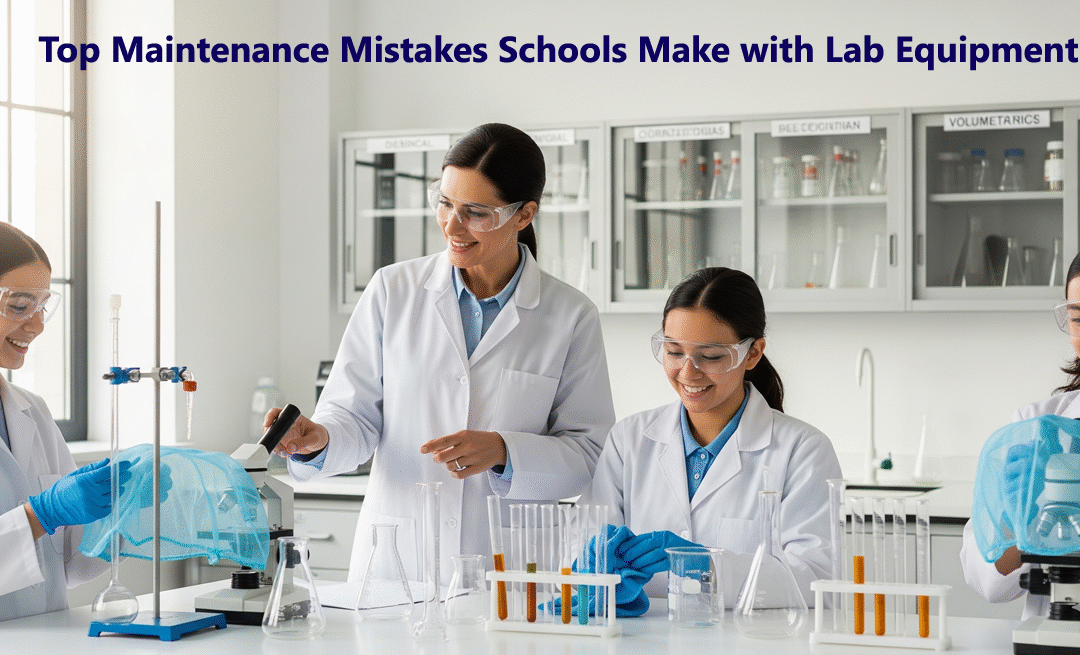Running a school science lab is both exciting and challenging. A well-equipped lab opens the door to curiosity, hands-on learning, and creativity for students. But too often, schools invest in quality equipment only to see it wear out, break, or become unusable within a short time. The culprit? Poor maintenance.
At ScienceFirst.com, we frequently see common mistakes that shorten the life of lab equipment. Let’s explore them — and how schools can avoid them.
- Ignoring Regular Cleaning
One of the most frequent mistakes is skipping routine cleaning. Whether it’s glassware, microscopes, or electronic balances, even small residues can cause damage over time. For example, unwashed test tubes may retain chemicals that corrode surfaces or contaminate the next experiment.
Fix: Encourage students to wash and dry equipment immediately after use, and schedule weekly deep cleaning by lab assistants.
- Poor Storage Practices
We often find expensive lab tools stored in damp rooms, stacked haphazardly, or left exposed to dust. Improper storage not only damages delicate instruments but also poses safety risks.
Fix: Invest in labeled storage cabinets, racks, and dry containers. Simple steps like using silica gel packs or keeping microscopes covered go a long way.
- Skipping Safety Checks
Fire extinguishers, gas taps, and eye-wash stations are often ignored until an emergency arises. The same happens with electrical equipment — wires fray, plugs loosen, but no one notices until something fails.
Fix: Create a monthly safety checklist. Assign responsibilities to teachers or lab assistants so issues are spotted early.
- Overuse of Fragile Equipment by Students
It’s wonderful to let students explore, but unsupervised handling of sensitive items — like precision balances or glass pipettes — leads to frequent breakage.
Fix: Train students on proper handling. Provide demonstration sessions and use low-cost models for practice before moving to premium instruments.
- Lack of Preventive Maintenance
Schools often wait until something breaks before calling a technician. This reactive approach costs more than timely preventive maintenance. For example, lubricating microscope gears or calibrating digital meters annually can extend their lifespan by years.
Fix: Schedule yearly service checks with your supplier or trained technician. Think of it as an “annual health check-up” for your lab.
- No Documentation or Tracking
Another overlooked mistake is failing to maintain inventory records. Without logs, schools don’t know what’s missing, damaged, or overdue for servicing.
Fix: Maintain a simple register or digital logbook with purchase dates, service schedules, and usage records. This makes budgeting and audits easier too.
Final Thoughts
Lab equipment is an investment in your students’ future. Avoiding these common maintenance mistakes doesn’t require massive budgets — just awareness, consistency, and a little planning. By caring for your lab tools, you not only save costs but also ensure that every student continues to experience the joy of hands-on learning.
👉 At ScienceFirst.com, we don’t just supply equipment — we partner with schools to make sure their labs run smoothly for years.

